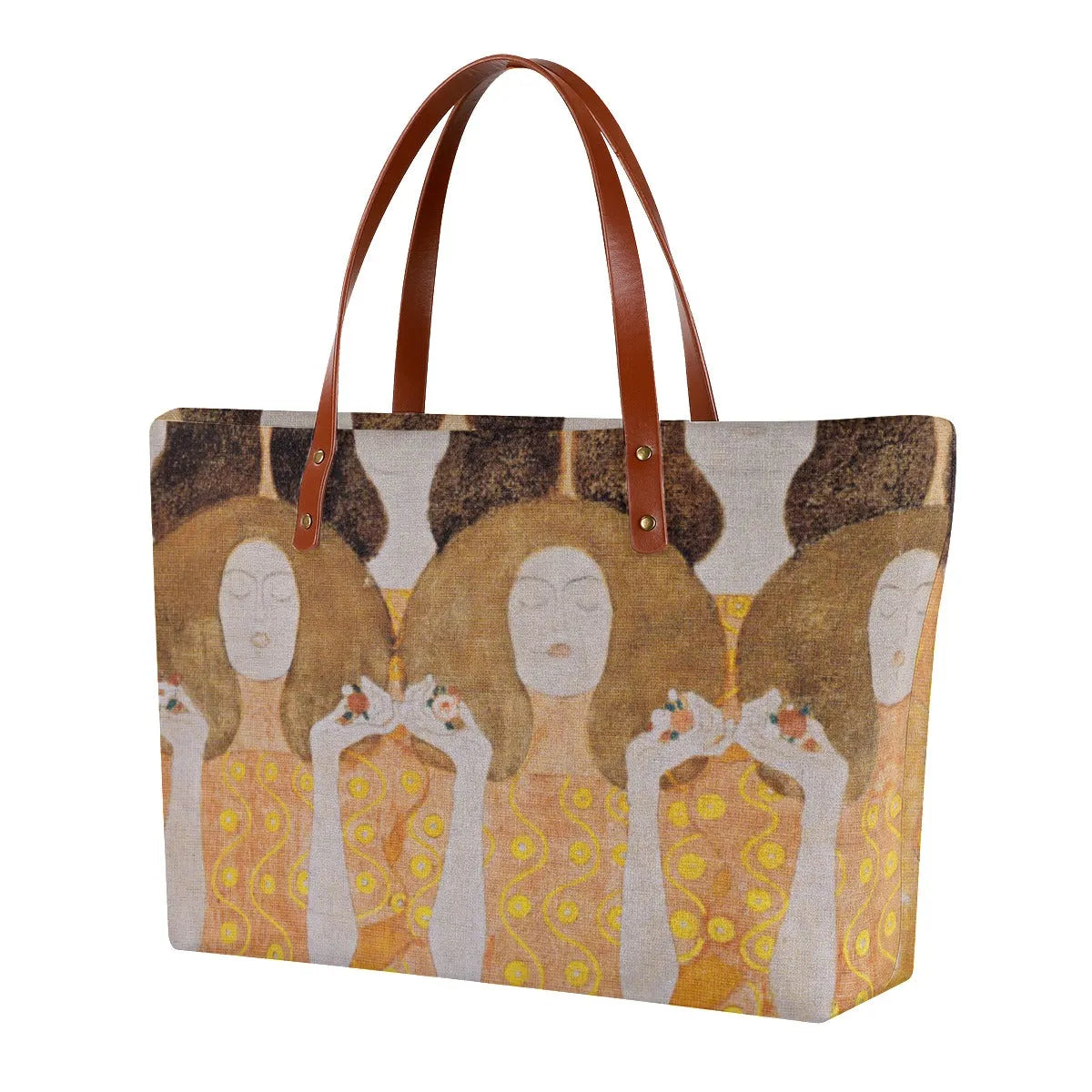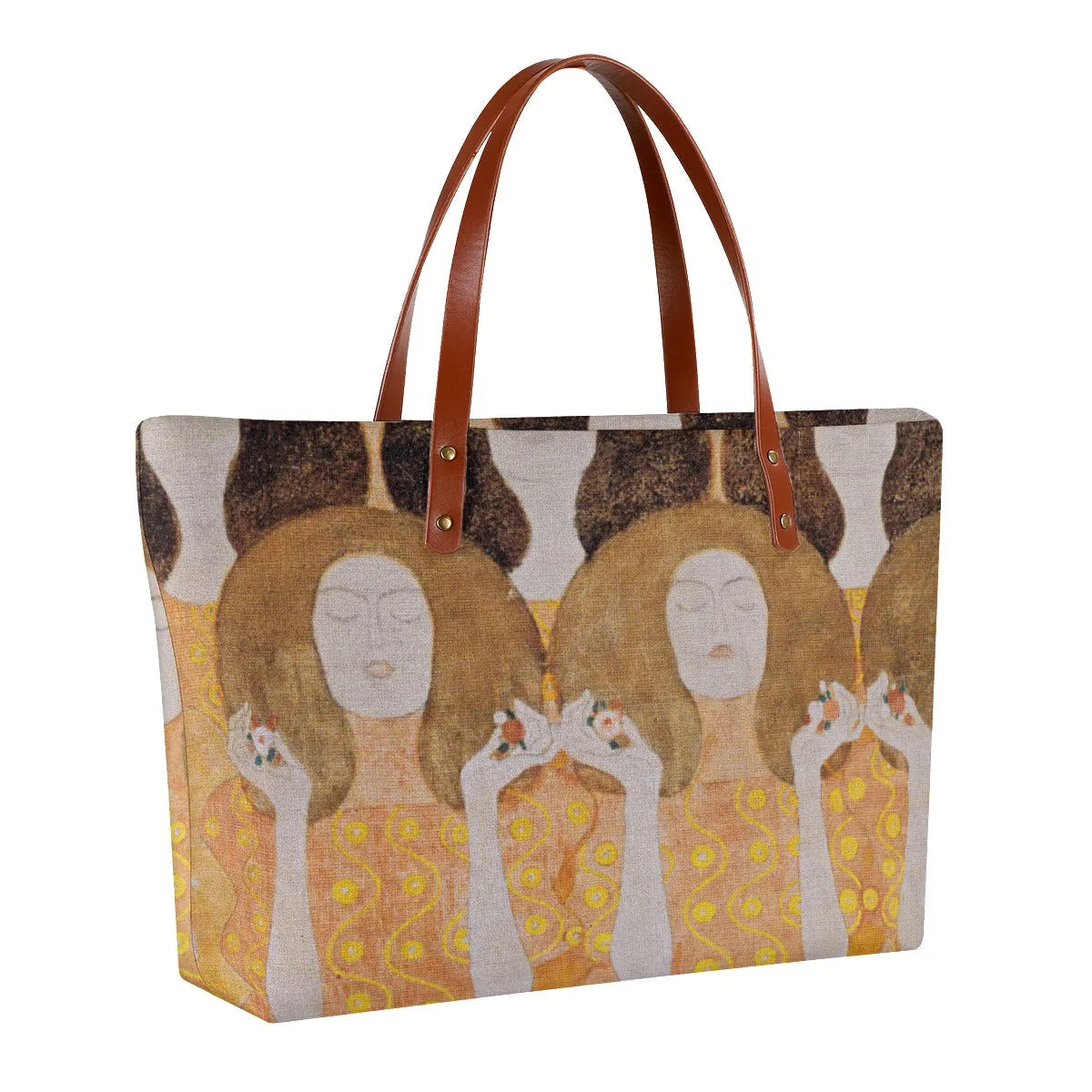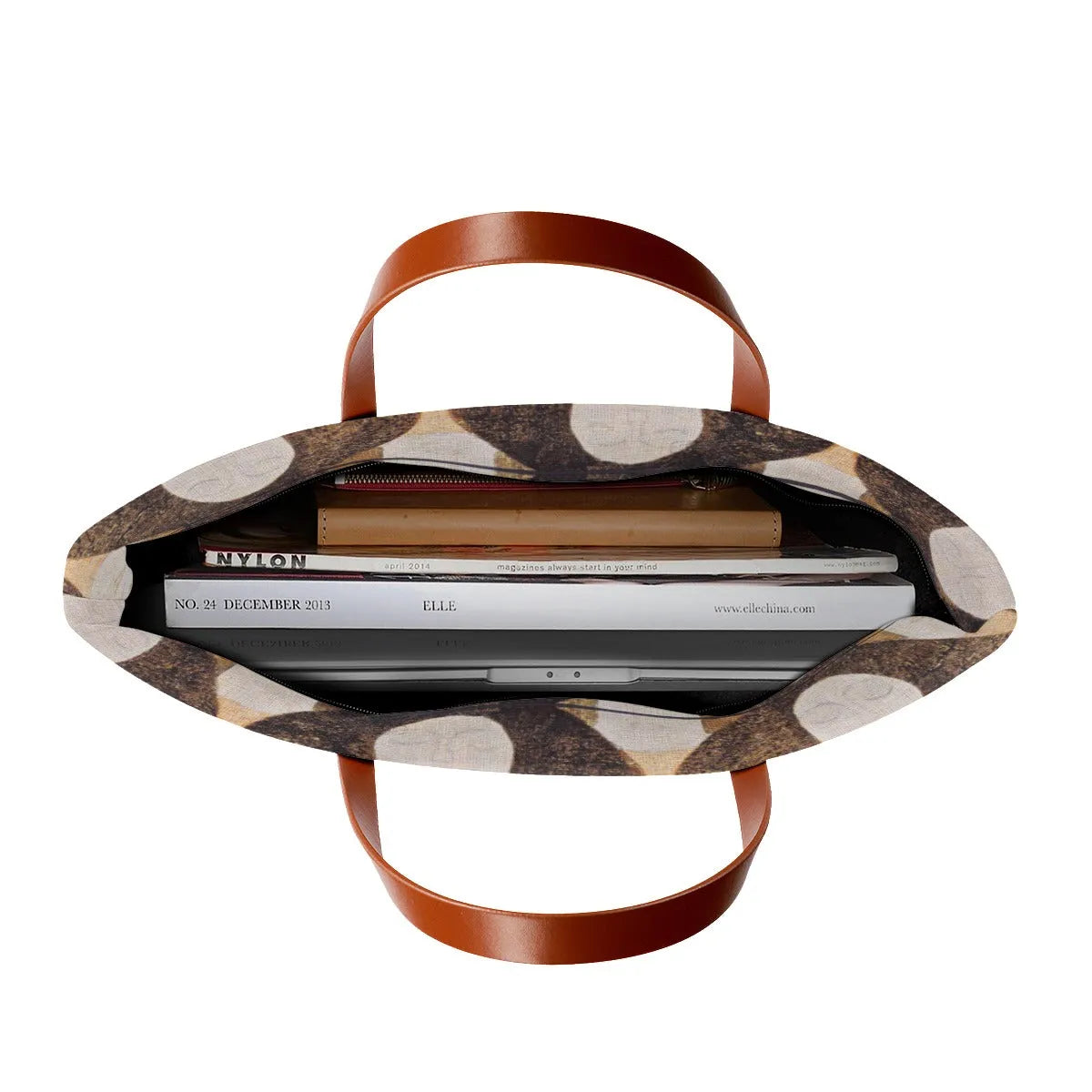



Beethoven Frieze by Gustav Klimt Painting Art Tote Bag
Carrying the Beethoven Frieze by Gustav Klimt Art Tote Bag is more than just making a fashion statement; it's an expression of your artistic soul. The vivid colors and captivating patterns will draw attention and spark conversations wherever you go. You become a walking gallery, inspiring those around you to appreciate and delve into the world of art.
Whether you're attending cultural events, strolling through the city, or simply running errands, this art tote bag elevates your style and adds a touch of sophistication to any outfit. As you embrace the emotions and stories behind Klimt's masterpiece, you'll find yourself enchanted by the magnetic allure of this timeless artwork.
- Made of Diving Cloth
- Waterproof Fabric
- Large capacity
- Black zipper and Lining
- Brown strap
- Double-sided Famous Painting Art
Known for his opulent and decorative style, Klimt created a visual language that combined intricate patterns, rich symbolism, and sensual portrayals of the human form. Here are all of Gustav Klimt's Famous Paintings.
About the artwork
We are aiming to have your order dispatched from our facility within 48 hours. However, please bear with us in case we are spending extra time in checking / perfecting your items, particularly during the peak season around end of the year. This does not include weekends or holidays.
Purchases made after 6pm PT will not be shipped out until the next business day. If you order after 6pm PT on a friday, your order will likely be shipped out on the following monday. For more information click here.
We provide a return policy, allowing customers to return products within a specified timeframe if they are not completely satisfied. For more information click here.
We offer a range of secure payment methods, including major credit cards and debit cards such as Mastercard, Visa, and American Express. Additionally, we support digital wallets like Apple Pay and allow for seamless transactions through trusted platforms like PayPal. For more information click here.
Choose options




20% Off Everything - Limited time only.
Enjoy Free Shipping on All Orders!
